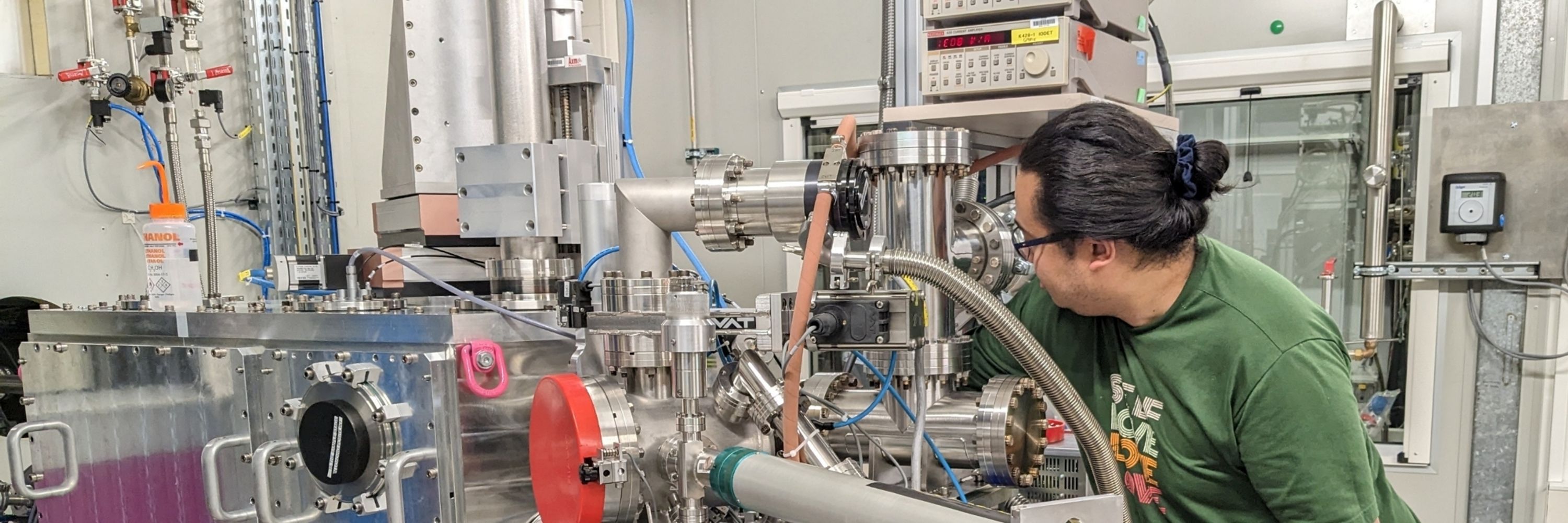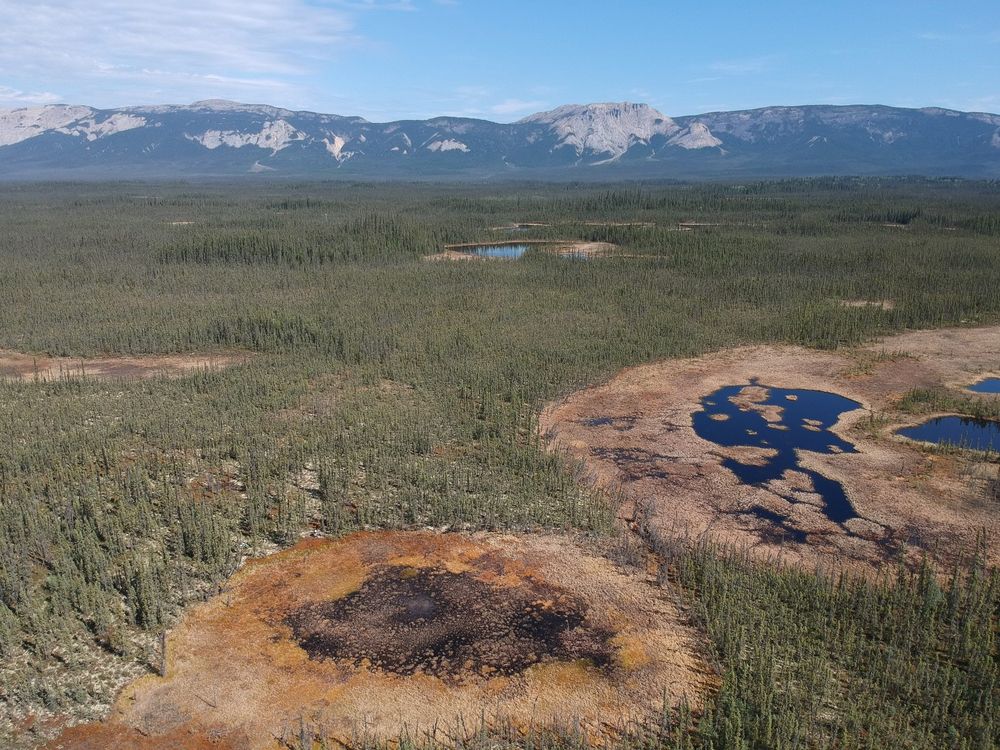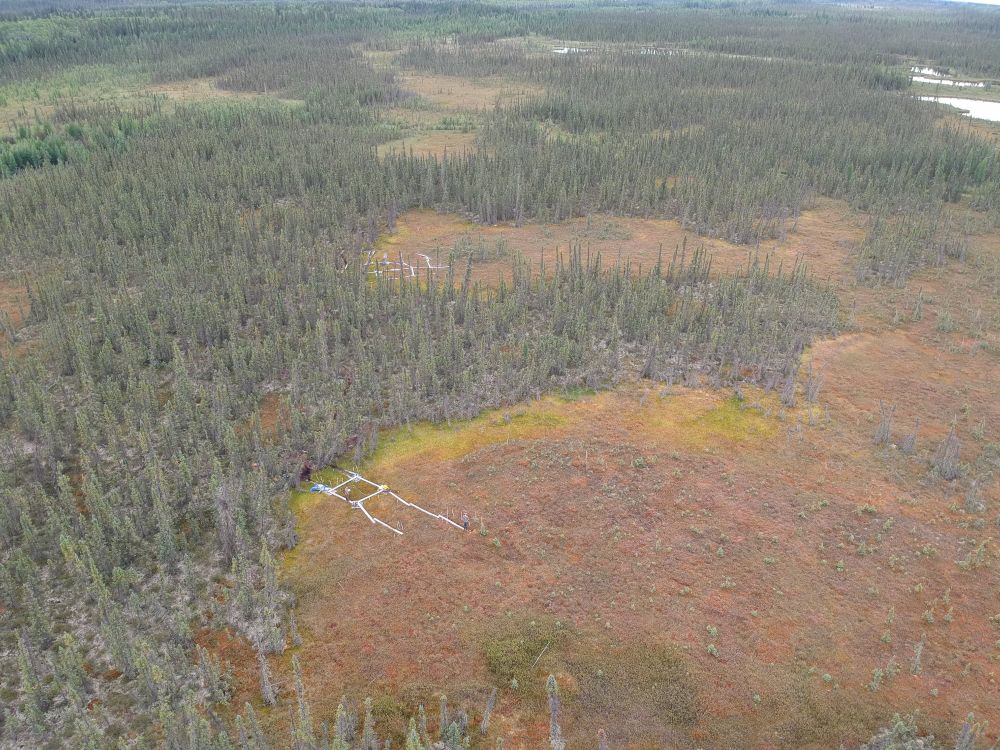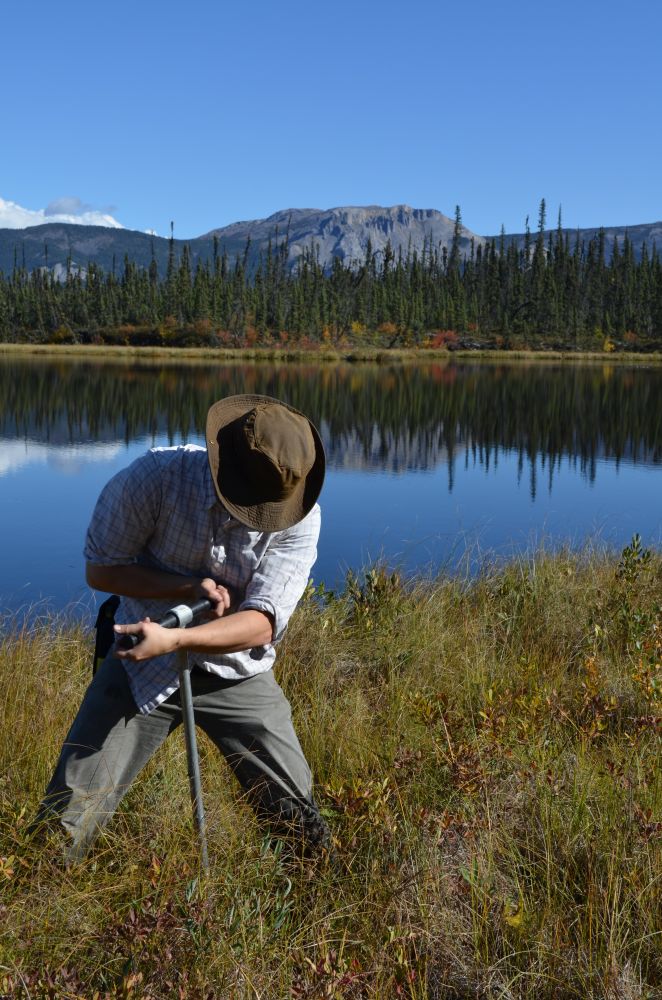
Jeff Perez
@jeffperez.bsky.social
Discovery Research Fellow GFZ 🇩🇪, currently studying OC-Fe cycling in polar wetlands 🇮🇸🇬🇱 | Envi Mineralogy & Biogeochem | #firstgen 🇵🇭 | he/they/siya 🌈
Last day as a Discovery Research Fellow — same island, new questions. Grateful to @gfz.bsky.social for this wonderful opportunity.
Fresh Iceland work starts now. @anneeberle.bsky.social @lianegbenning.bsky.social
Fresh Iceland work starts now. @anneeberle.bsky.social @lianegbenning.bsky.social

October 31, 2025 at 5:16 PM
Last day as a Discovery Research Fellow — same island, new questions. Grateful to @gfz.bsky.social for this wonderful opportunity.
Fresh Iceland work starts now. @anneeberle.bsky.social @lianegbenning.bsky.social
Fresh Iceland work starts now. @anneeberle.bsky.social @lianegbenning.bsky.social
Reposted by Jeff Perez
I have a fully funded PhD position open for start in Jan or May 2026. Field work in peatlands of the Northwest Territories, with lab work to understand potential downstream mobilization of carbon, nutrients, mercury after thaw or wildfire. Reach out for more information, and please send on!




July 7, 2025 at 8:56 PM
I have a fully funded PhD position open for start in Jan or May 2026. Field work in peatlands of the Northwest Territories, with lab work to understand potential downstream mobilization of carbon, nutrients, mercury after thaw or wildfire. Reach out for more information, and please send on!
Reposted by Jeff Perez
📅 DEI Session: Weds July 9 , 8:30 Club C (1st Floor)
Join our #DEI session “Geochemistry beyond stereotypes: solving tough scientific issues & advancing diversity, equity & inclusion” to explore lived experiences & strategies for a more inclusive geochem community
@eageo.bsky.social
Join our #DEI session “Geochemistry beyond stereotypes: solving tough scientific issues & advancing diversity, equity & inclusion” to explore lived experiences & strategies for a more inclusive geochem community
@eageo.bsky.social

July 8, 2025 at 3:18 PM
📅 DEI Session: Weds July 9 , 8:30 Club C (1st Floor)
Join our #DEI session “Geochemistry beyond stereotypes: solving tough scientific issues & advancing diversity, equity & inclusion” to explore lived experiences & strategies for a more inclusive geochem community
@eageo.bsky.social
Join our #DEI session “Geochemistry beyond stereotypes: solving tough scientific issues & advancing diversity, equity & inclusion” to explore lived experiences & strategies for a more inclusive geochem community
@eageo.bsky.social
Excited to share our new collaborative paper with @vanvillegas.bsky.social! 🧪
Proud to have contributed through the Envi Mineralogy & Biogeochemistry Labs @lianegbenning.bsky.social & @forjanes.bsky.social.
Proud to have contributed through the Envi Mineralogy & Biogeochemistry Labs @lianegbenning.bsky.social & @forjanes.bsky.social.
Just published my first paper from my PhD project! 🔬
Here, we show that nanoplastics—those tiny, pervasive pollutants—can alter the microbiome of Daphnia, a keystone freshwater organism.
Check it out here
kwnsfk27.r.eu-west-1.awstrack.me/L0/https:%2F...
Here, we show that nanoplastics—those tiny, pervasive pollutants—can alter the microbiome of Daphnia, a keystone freshwater organism.
Check it out here
kwnsfk27.r.eu-west-1.awstrack.me/L0/https:%2F...
Redirecting
kwnsfk27.r.eu-west-1.awstrack.me
June 25, 2025 at 5:43 AM
Excited to share our new collaborative paper with @vanvillegas.bsky.social! 🧪
Proud to have contributed through the Envi Mineralogy & Biogeochemistry Labs @lianegbenning.bsky.social & @forjanes.bsky.social.
Proud to have contributed through the Envi Mineralogy & Biogeochemistry Labs @lianegbenning.bsky.social & @forjanes.bsky.social.
Big thanks to @mimilovesmilo.bsky.social for a great collab during her @daadworldwide.bsky.social RISE internship at @gfz.bsky.social!
And grateful to @diamondlightsource.bsky.social for beamtime at I20-scanning that allowed us to "look" inside the crystal structure of these minerals. 💡💠
And grateful to @diamondlightsource.bsky.social for beamtime at I20-scanning that allowed us to "look" inside the crystal structure of these minerals. 💡💠
New paper out! 🎉
How does #phosphate, a common nutrient in fertilizers, influence the behavior of toxic #arsenic in soils and groundwater?
We show that phosphate levels affect how well arsenate can be locked inside iron minerals, controlling its toxicity and mobility.
🔗: tinyurl.com/3k254ebf
How does #phosphate, a common nutrient in fertilizers, influence the behavior of toxic #arsenic in soils and groundwater?
We show that phosphate levels affect how well arsenate can be locked inside iron minerals, controlling its toxicity and mobility.
🔗: tinyurl.com/3k254ebf

Coexisting Phosphate Controls Arsenate Speciation and Partitioning during Fe(II)-Catalyzed Ferrihydrite Transformation
Arsenic immobilization in soils and sediments is primarily controlled by its sorption onto or incorporation into reactive soil minerals, such as iron (oxyhydr)oxides. However, coexisting ions (e.g., dissolved bicarbonate, phosphate, silica, and organic matter) can negatively impact the interaction of the toxic arsenate species with iron (oxy)hydroxides. Of special note is inorganic phosphate, which is a strong competitor for sorption sites due to its analogous chemical and structural nature to inorganic arsenate. Much of our understanding of this competing nature between phosphate and arsenate focuses on the impact on mineral sorption capacities and kinetics. However, we know very little about how coexisting phosphate will alter the stability and transformation pathways of arsenate-bearing Fe (oxyhydr)oxides. In particular, the long-term fate and behavior regarding arsenate immobilization are unknown under anoxic conditions. Here, we document, through mineral transformation reactions, the immobilization of both phosphate (P) and arsenate [As(V)] in secondary mineral products and characterize their changing compositions during the transformations. We did this while controlling the initial P/As(V) ratios. Our results document that, in the absence or at low P/As(V) ratios, the initial ferrihydrite rapidly transforms to green rust sulfate (GRSO4), which further transforms into magnetite after 180 days. Meanwhile, high P/As(V) ratios resulted in a mixture of GRSO4 and vivianite, with magnetite as a minor fraction. Invariably, the speciation and partitioning of As(V) were also affected by the P/As(V) ratio. A higher P/As(V) ratio also led to a faster partial reduction of mineral-bound As(V) to As(III). The most important finding is that the initial ferrihydrite-bound As(V) became structurally incorporated into magnetite [low P/As(V) ratio] or vivianite [high P/As(V) ratio] and was thus immobilized and not labile. Overall, our results highlight the influence of coexisting phosphate in controlling the toxicity and mobility in anoxic, Fe2+-rich subsurface settings, such as contaminated aquifers.
pubs.acs.org
June 16, 2025 at 12:01 PM
Big thanks to @mimilovesmilo.bsky.social for a great collab during her @daadworldwide.bsky.social RISE internship at @gfz.bsky.social!
And grateful to @diamondlightsource.bsky.social for beamtime at I20-scanning that allowed us to "look" inside the crystal structure of these minerals. 💡💠
And grateful to @diamondlightsource.bsky.social for beamtime at I20-scanning that allowed us to "look" inside the crystal structure of these minerals. 💡💠
New paper out! 🎉
How does #phosphate, a common nutrient in fertilizers, influence the behavior of toxic #arsenic in soils and groundwater?
We show that phosphate levels affect how well arsenate can be locked inside iron minerals, controlling its toxicity and mobility.
🔗: tinyurl.com/3k254ebf
How does #phosphate, a common nutrient in fertilizers, influence the behavior of toxic #arsenic in soils and groundwater?
We show that phosphate levels affect how well arsenate can be locked inside iron minerals, controlling its toxicity and mobility.
🔗: tinyurl.com/3k254ebf

Coexisting Phosphate Controls Arsenate Speciation and Partitioning during Fe(II)-Catalyzed Ferrihydrite Transformation
Arsenic immobilization in soils and sediments is primarily controlled by its sorption onto or incorporation into reactive soil minerals, such as iron (oxyhydr)oxides. However, coexisting ions (e.g., dissolved bicarbonate, phosphate, silica, and organic matter) can negatively impact the interaction of the toxic arsenate species with iron (oxy)hydroxides. Of special note is inorganic phosphate, which is a strong competitor for sorption sites due to its analogous chemical and structural nature to inorganic arsenate. Much of our understanding of this competing nature between phosphate and arsenate focuses on the impact on mineral sorption capacities and kinetics. However, we know very little about how coexisting phosphate will alter the stability and transformation pathways of arsenate-bearing Fe (oxyhydr)oxides. In particular, the long-term fate and behavior regarding arsenate immobilization are unknown under anoxic conditions. Here, we document, through mineral transformation reactions, the immobilization of both phosphate (P) and arsenate [As(V)] in secondary mineral products and characterize their changing compositions during the transformations. We did this while controlling the initial P/As(V) ratios. Our results document that, in the absence or at low P/As(V) ratios, the initial ferrihydrite rapidly transforms to green rust sulfate (GRSO4), which further transforms into magnetite after 180 days. Meanwhile, high P/As(V) ratios resulted in a mixture of GRSO4 and vivianite, with magnetite as a minor fraction. Invariably, the speciation and partitioning of As(V) were also affected by the P/As(V) ratio. A higher P/As(V) ratio also led to a faster partial reduction of mineral-bound As(V) to As(III). The most important finding is that the initial ferrihydrite-bound As(V) became structurally incorporated into magnetite [low P/As(V) ratio] or vivianite [high P/As(V) ratio] and was thus immobilized and not labile. Overall, our results highlight the influence of coexisting phosphate in controlling the toxicity and mobility in anoxic, Fe2+-rich subsurface settings, such as contaminated aquifers.
pubs.acs.org
June 16, 2025 at 11:39 AM
New paper out! 🎉
How does #phosphate, a common nutrient in fertilizers, influence the behavior of toxic #arsenic in soils and groundwater?
We show that phosphate levels affect how well arsenate can be locked inside iron minerals, controlling its toxicity and mobility.
🔗: tinyurl.com/3k254ebf
How does #phosphate, a common nutrient in fertilizers, influence the behavior of toxic #arsenic in soils and groundwater?
We show that phosphate levels affect how well arsenate can be locked inside iron minerals, controlling its toxicity and mobility.
🔗: tinyurl.com/3k254ebf
Reposted by Jeff Perez
Very excited to share my first 100% @gfz.bsky.social paper on mineral pseudomorphism with my Interface Geochemistry fantastic team! @lianegbenning.bsky.social @jeffperez.bsky.social
New in #GPLetters: Pseudomorphism, one of the most prominent features of mineral replacement phenomena, can survive several successive mineral transformations, as experimentally demonstrated for the 1st time by Forjanes et al ➡️ buff.ly/FbNFwXw
@forjanes.bsky.social
@jeffperez.bsky.social
@forjanes.bsky.social
@jeffperez.bsky.social

April 23, 2025 at 2:06 PM
Very excited to share my first 100% @gfz.bsky.social paper on mineral pseudomorphism with my Interface Geochemistry fantastic team! @lianegbenning.bsky.social @jeffperez.bsky.social
First day back at work after my #PH holidays 🌴🌞 and going through hundreds of emails 😵
Despite a fellowship rejection, we had a couple of manuscripts accepted, and the reviewer comments on my last manuscript were all quite positive! 🤞
What a great start to the month!
Despite a fellowship rejection, we had a couple of manuscripts accepted, and the reviewer comments on my last manuscript were all quite positive! 🤞
What a great start to the month!
April 1, 2025 at 1:07 PM
First day back at work after my #PH holidays 🌴🌞 and going through hundreds of emails 😵
Despite a fellowship rejection, we had a couple of manuscripts accepted, and the reviewer comments on my last manuscript were all quite positive! 🤞
What a great start to the month!
Despite a fellowship rejection, we had a couple of manuscripts accepted, and the reviewer comments on my last manuscript were all quite positive! 🤞
What a great start to the month!
📣 Only 7 days left until the abstract deadline for #Goldschmidt2025! @goldschmidt-confer.bsky.social
If you are working on elemental cycling and transport in polar environments, please consider submitting an abstract to our Goldschmidt Session 8e: shorturl.at/d4yNf.
Hope to see you in Prague!
If you are working on elemental cycling and transport in polar environments, please consider submitting an abstract to our Goldschmidt Session 8e: shorturl.at/d4yNf.
Hope to see you in Prague!

February 19, 2025 at 10:53 AM
📣 Only 7 days left until the abstract deadline for #Goldschmidt2025! @goldschmidt-confer.bsky.social
If you are working on elemental cycling and transport in polar environments, please consider submitting an abstract to our Goldschmidt Session 8e: shorturl.at/d4yNf.
Hope to see you in Prague!
If you are working on elemental cycling and transport in polar environments, please consider submitting an abstract to our Goldschmidt Session 8e: shorturl.at/d4yNf.
Hope to see you in Prague!
📣 Researchers wanted!
3x #PhD and 1x #PostDoc positions available in the #EnviChem group @lthomasarrigo.bsky.social at UniNeuchâtel CH. The topics are interesting + Laurel is an amazing mentor. Come and join their lab! #geochem #soil #mineralogy #carbon
More info below 👇
3x #PhD and 1x #PostDoc positions available in the #EnviChem group @lthomasarrigo.bsky.social at UniNeuchâtel CH. The topics are interesting + Laurel is an amazing mentor. Come and join their lab! #geochem #soil #mineralogy #carbon
More info below 👇
📢The Environmental Chemistry group at University of Neuchâtel (CH) is hiring 💥3 PhD students and 💥1 Postdoc to work on mineral-organic carbon interactions in a @snsf-ch.bsky.social -funded Starting Grant. More information here: www.unine.ch/envchem/open...
Open Positions - Environmental Chemistry
www.unine.ch
January 27, 2025 at 3:02 PM
📣 Researchers wanted!
3x #PhD and 1x #PostDoc positions available in the #EnviChem group @lthomasarrigo.bsky.social at UniNeuchâtel CH. The topics are interesting + Laurel is an amazing mentor. Come and join their lab! #geochem #soil #mineralogy #carbon
More info below 👇
3x #PhD and 1x #PostDoc positions available in the #EnviChem group @lthomasarrigo.bsky.social at UniNeuchâtel CH. The topics are interesting + Laurel is an amazing mentor. Come and join their lab! #geochem #soil #mineralogy #carbon
More info below 👇
Reposted by Jeff Perez
Meet one of our handling editors - Raúl Fonseca. He talked about what were his main motivations to join AGC and why he thinks that researchers should support DOA publishing. Can you guess why S is his favourite element?
Follow the link to the full interview https://buff.ly/3E9d173
Publish with AGC!
Follow the link to the full interview https://buff.ly/3E9d173
Publish with AGC!
January 27, 2025 at 9:49 AM
Meet one of our handling editors - Raúl Fonseca. He talked about what were his main motivations to join AGC and why he thinks that researchers should support DOA publishing. Can you guess why S is his favourite element?
Follow the link to the full interview https://buff.ly/3E9d173
Publish with AGC!
Follow the link to the full interview https://buff.ly/3E9d173
Publish with AGC!
Reposted by Jeff Perez
Spread the word📢 Please repost this msg so that we can build the #geochemistry community 👨👨👧👧 on Bluesky. Follow the European Association of Geochemistry for regular updates on: job & funding opportunities; the latest papers in #GPLetters; #Goldschmidt2025 & other events.
More info: www.eag.org
More info: www.eag.org

November 27, 2024 at 4:44 AM
Spread the word📢 Please repost this msg so that we can build the #geochemistry community 👨👨👧👧 on Bluesky. Follow the European Association of Geochemistry for regular updates on: job & funding opportunities; the latest papers in #GPLetters; #Goldschmidt2025 & other events.
More info: www.eag.org
More info: www.eag.org
Reposted by Jeff Perez
DOM summer school - Please share!
Opportunity for early/mid PhD students.
Application form: doit.medfarm.uu.se/bin/kurt3/ku...
Applications will be open in the first instance until 31st January 2025. Venue for the summer school: www.gu.se/en/tjarno Please send questions to jeffrey.hawkes@kemi.uu.se
Opportunity for early/mid PhD students.
Application form: doit.medfarm.uu.se/bin/kurt3/ku...
Applications will be open in the first instance until 31st January 2025. Venue for the summer school: www.gu.se/en/tjarno Please send questions to jeffrey.hawkes@kemi.uu.se

December 10, 2024 at 4:12 PM
DOM summer school - Please share!
Opportunity for early/mid PhD students.
Application form: doit.medfarm.uu.se/bin/kurt3/ku...
Applications will be open in the first instance until 31st January 2025. Venue for the summer school: www.gu.se/en/tjarno Please send questions to jeffrey.hawkes@kemi.uu.se
Opportunity for early/mid PhD students.
Application form: doit.medfarm.uu.se/bin/kurt3/ku...
Applications will be open in the first instance until 31st January 2025. Venue for the summer school: www.gu.se/en/tjarno Please send questions to jeffrey.hawkes@kemi.uu.se
I finally managed to move here!
Hi everyone, I am Jeff and I am broadly interested in mineral-organic matter-microbe interactions in terrestrial-aquatic interfaces. I am currently a research fellow at @gfz.bsky.social, studying #iron and #organiccarbon cycling in polar #wetlands.
Let's connect!
Hi everyone, I am Jeff and I am broadly interested in mineral-organic matter-microbe interactions in terrestrial-aquatic interfaces. I am currently a research fellow at @gfz.bsky.social, studying #iron and #organiccarbon cycling in polar #wetlands.
Let's connect!


December 19, 2024 at 11:14 AM
I finally managed to move here!
Hi everyone, I am Jeff and I am broadly interested in mineral-organic matter-microbe interactions in terrestrial-aquatic interfaces. I am currently a research fellow at @gfz.bsky.social, studying #iron and #organiccarbon cycling in polar #wetlands.
Let's connect!
Hi everyone, I am Jeff and I am broadly interested in mineral-organic matter-microbe interactions in terrestrial-aquatic interfaces. I am currently a research fellow at @gfz.bsky.social, studying #iron and #organiccarbon cycling in polar #wetlands.
Let's connect!

